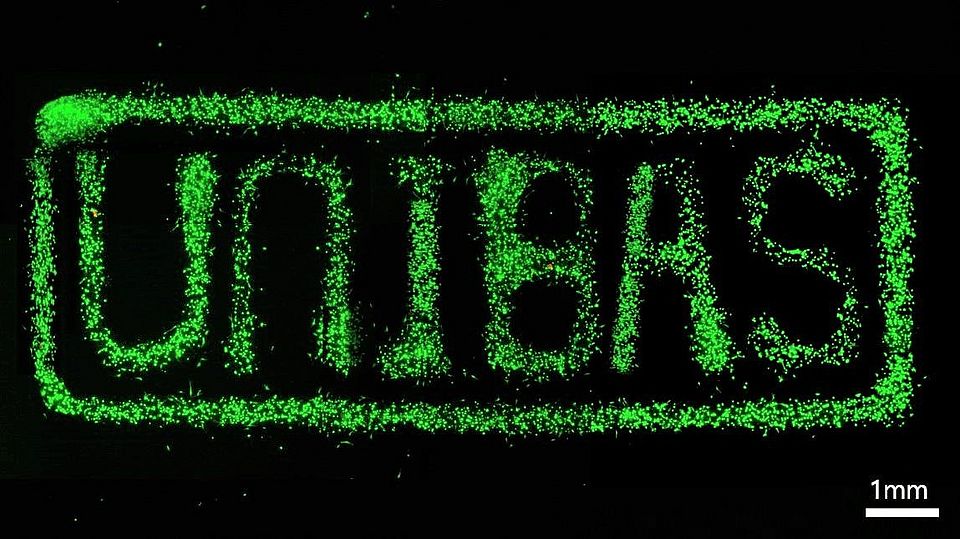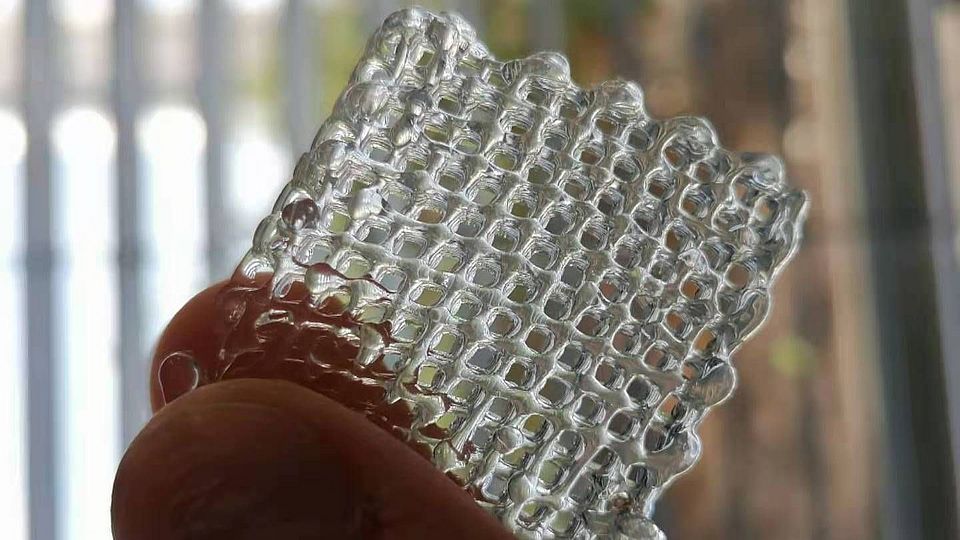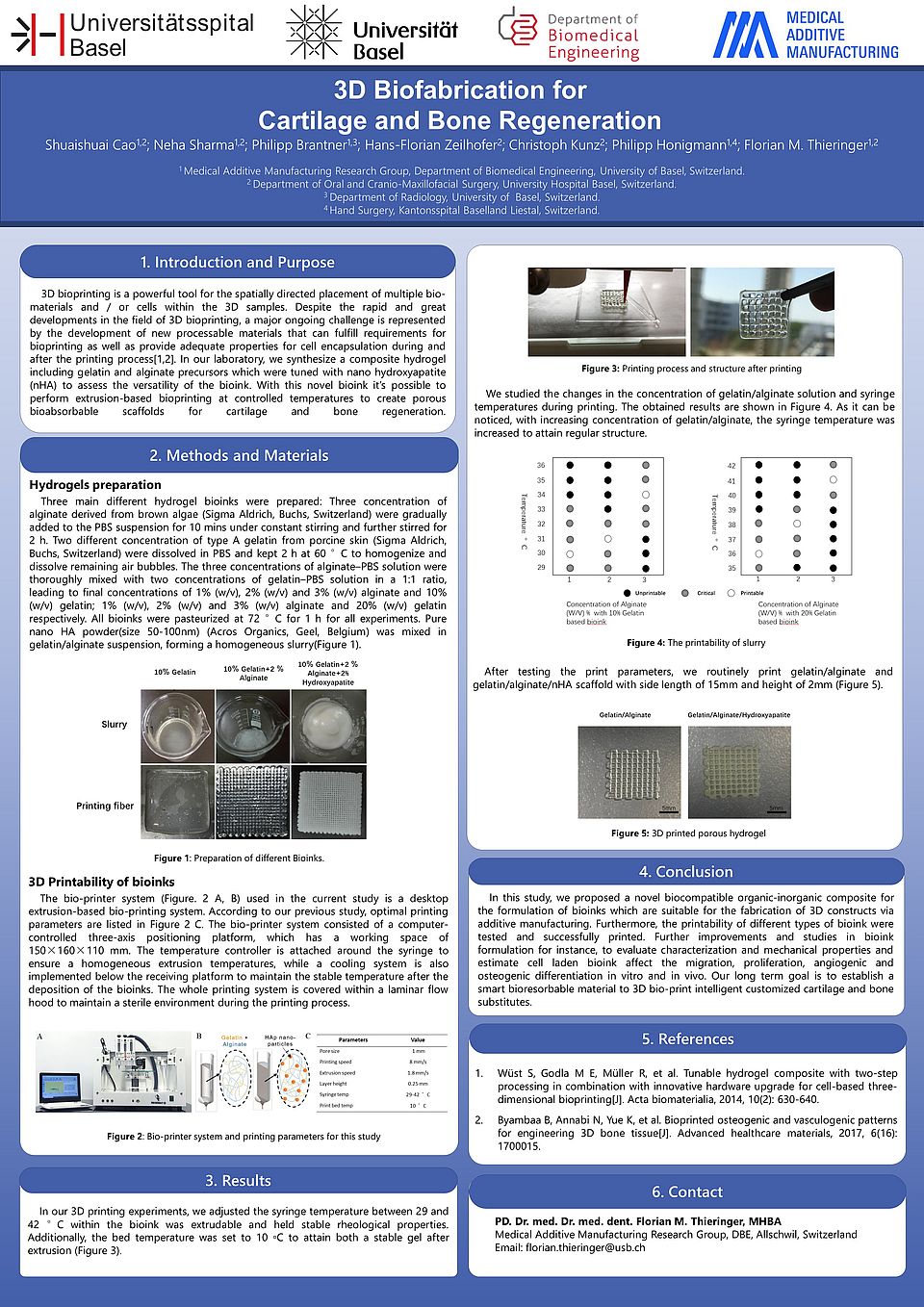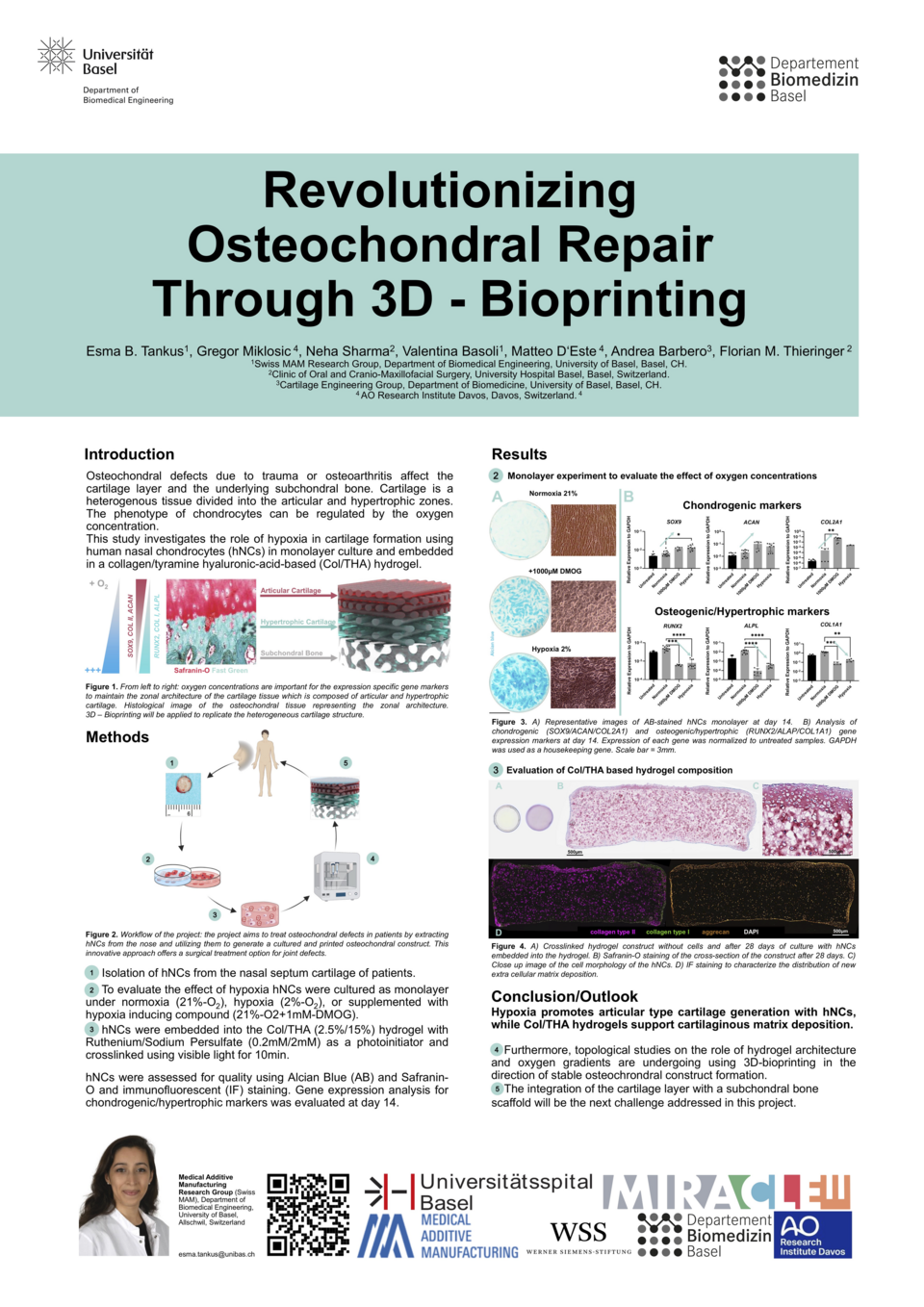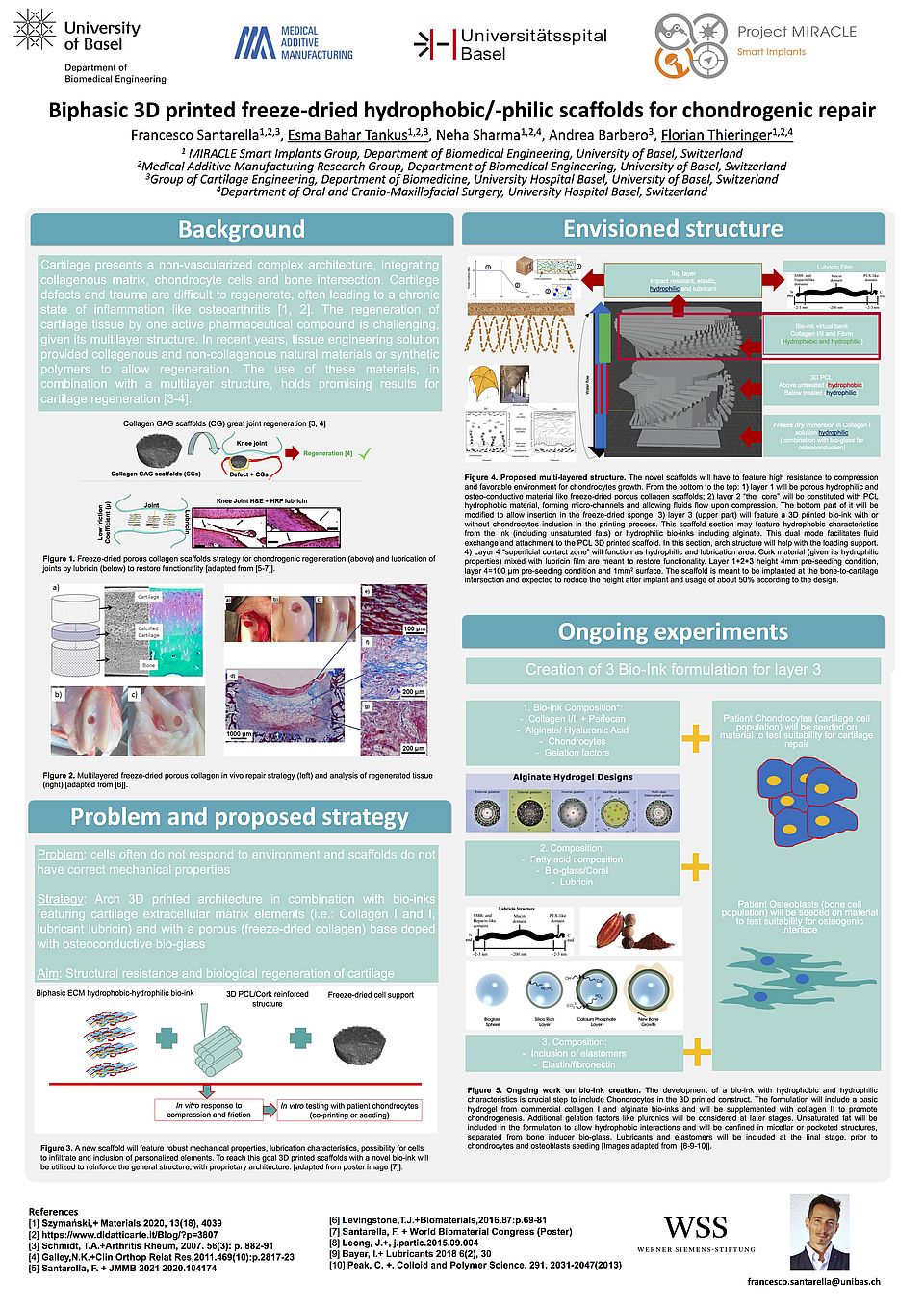Bioprinting
Biomaterials and Bioinks in 3D Printing for Hard Tissue Regeneration
Research Topics
3D bioprinting technologies
Hydrogels
Biomaterials
Bone regeneration
Cartilage regeneration
Dental stem cells
Craniomaxillofacial (CMF) bone defects caused by trauma, tumor, or congenital malformation, are still a challenge in current clinical treatment due to complex geometries and unique function. Bone substitute through 3D printing has attracted tremendous attention over recent years in CMF application. Although 3D printing offers the possibility to control the porous geometry and internal structure of the built object, printed scaffolds are generally inactive and/or non-biodegradable.
3D bioprinting has been introduced into manufacturing specific and bioresorbable implant with living cells to create personalized bone scaffolds. Biomaterials and bio-inks for 3D bioprinting in bone regeneration are confronted with two basic requirements: processability for fabricating well-matched porous structures and cytocompatibility to facilitate cell proliferation and differentiation.
Our preliminary results show that our bio-ink exhibit favorable biological properties and printability when loaded with bone marrow stem cells (BMSCs) and significantly enhances osteogenic differentiation in vitro. We aim to explore the manufacturing process and bone regeneration potential of different biomaterials via 3D bioprinting with cell-laden bio-ink strategy. The new solutions will offer multi-possibilities and personal medical care in CMF surgeries, specificity in the interaction between 3D printed living scaffold and the biological surrounding, and adherence to the end-user’s needs (CMF surgeons) in further advancement of clinical application.

